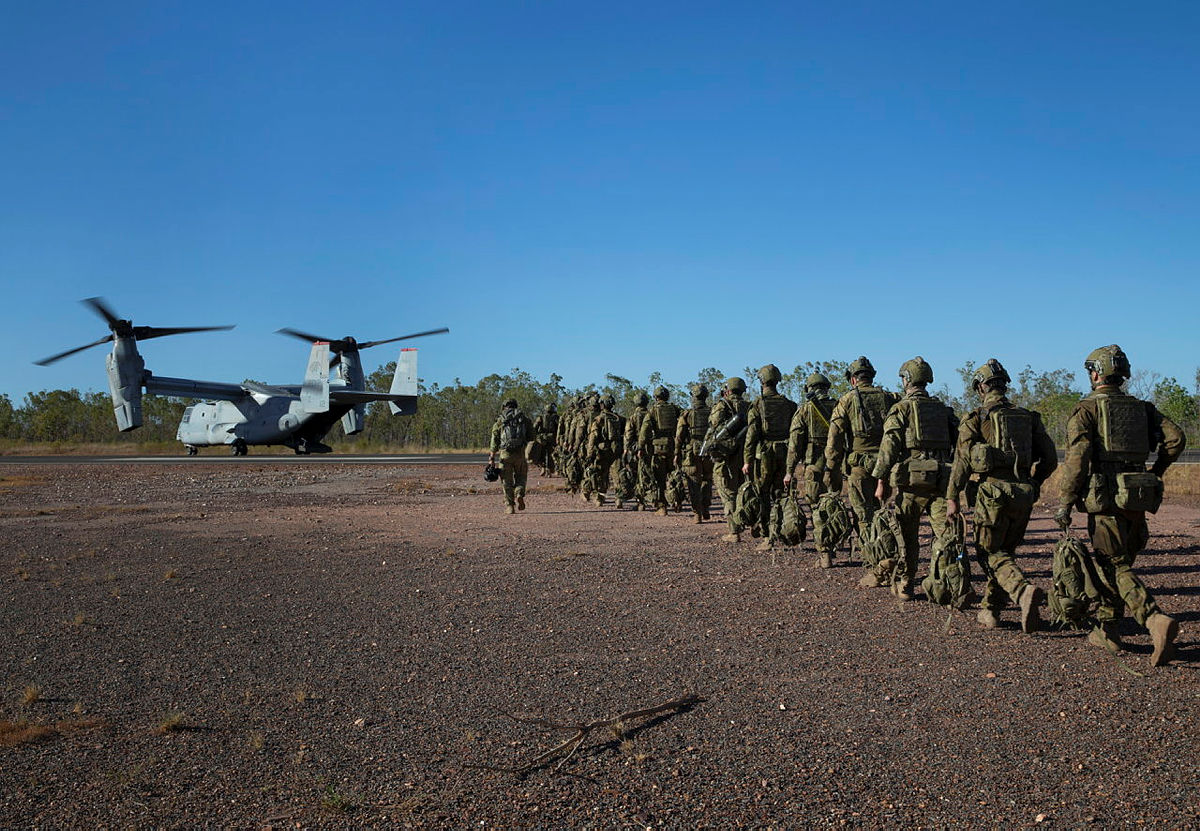
For even the most casual of observers, it’s clear that over the past decade the global strategic security environment has become increasingly complex. With a rising and increasingly assertive China, a resurgent Russia and a growing number of capable and unpredictable non-state actors, the US finds itself relying on its allies more than ever. This is particularly the case in the Indo-Pacific, where the US is trying to nurture greater cooperation with partners and allies. The good news here is that while long-time ally Australia isn’t writing blank cheques, it’s both willing and able to work with the US, where the two countries’ mutual interests align.
The geographic location of northern Australia is of significant strategic interest to the US, as the sea lines of communication are open to the broader Indo-Pacific in multiple directions. And there’s space for investment in adequate infrastructure for future expansion. The US and Australian defence strategies and policies are aligned in the Indo-Pacific and the national interests of each country are easier to navigate when our like-minded democracies cooperate.
The US should continue defence cooperation to leverage Australia’s strategic geography and modern defence capabilities to counter the recent corrosive and aggressive actions of China in the Indo-Pacific. This is why, today, ASPI is releasing its latest Strategic Insight, Stronger together: US force posture in Australia’s north—a US perspective of Australia’s strategic geography.
The new report argues why, and analyses how, Australia’s defence force capabilities and strategic geography can enable US force posture initiatives in the Indo-Pacific and promote greater regional cooperation in ways that advance US and Australian national interests.
There are several practical and tangible areas for US–Australia cooperation and growth, which include: expanding the Australian defence industrial base while securing and hardening supply chains; increasing US Army force posture in northern Australia; increasing multinational training opportunities; and, in conjunction with Australia, expanding the defence partnership with Indonesia. These actions should be explored to counter the growing influence of the Chinese state, as part of a broader national strategy.
The report’s first recommendation is that Australia should contribute to the US force posture initiatives with an expansion of its defence industrial base through a US–Australian joint venture to manufacture critical ammunition in Australia. Prime Minister Scott Morrison voiced support for a similar initiative when he stated the Australian government will ‘accelerate the creation of a $1 billion Sovereign Guided Weapons Enterprise, boosting skilled jobs and helping secure Australia’s sovereign defence capabilities’. Investment in the defence industry is part of Australia’s $270 billion, 10-year investment plan outlined in its recently published force structure plan.
An increase to US force posture in northern Australia would be in the strategic interest of both nations. Any force increase in US Army Pacific forces in northern Australia could be rotational, with the capability for rapid expansion during a crisis, to a semipermanent presence if conditions warrant. Such an increase would act as a strong grey-zone deterrent to China during a time when Australia has been subject to economic coercion from Beijing, apparently for Australian decisions made in its national interest over recent years. Australia can enable US Indo-Pacific Command’s force posture initiatives by allowing additional US Army pre-positioned stocks to be stationed in northern Australia, complementing the already planned US strategic fuel storage projects. This kind of investment will also mean more jobs and increased foreign investment for Australia.
A third area in which Australia could contribute to the US force posture initiatives is by offering an expansion of multinational training opportunities for additional US forces and those of other like-minded democracies, such as Quad members Japan and India. An increase in multinational training opportunities that compliment Marine Rotational Force – Darwin seems feasible given the $747 million recently announced as investment in training facilities in the Northern Territory. Through its strategic geography and economic leverage, Australia can be an important part of the connective tissue required to bring Quad members closer together.
The final area of cooperation is the expansion of the strong defence partnership between Australia and Indonesia, a relationship that’s important to the US and the region. A 2018 study from Australia’s Lowy Institute make the case for a recalibration of the Australian Defence Force’s defence cooperation program, with a focus on increased maritime security operations and defence industrial collaboration. Through expanded defence cooperation, Australia will build greater trust with Indonesia, which, together with the changing strategic environment in the region, could encourage Jakarta to re-evaluate its own defence policy.
The US now relies on increased cooperation from partners and allies to regain the initiative from China in the Indo-Pacific. Australia’s defence strategy and policies are better aligned to US defence strategy and policies today than ever before. Military modernisation alone will not effectively expand the competitive space and disrupt China’s grey-zone activities.
Australia can and should use its strategic geography and defence capabilities to enable US force posture initiatives to promote greater regional cooperation and, through greater deterrent posture and capability, reduce the risks of conflict in the Indo-Pacific.

